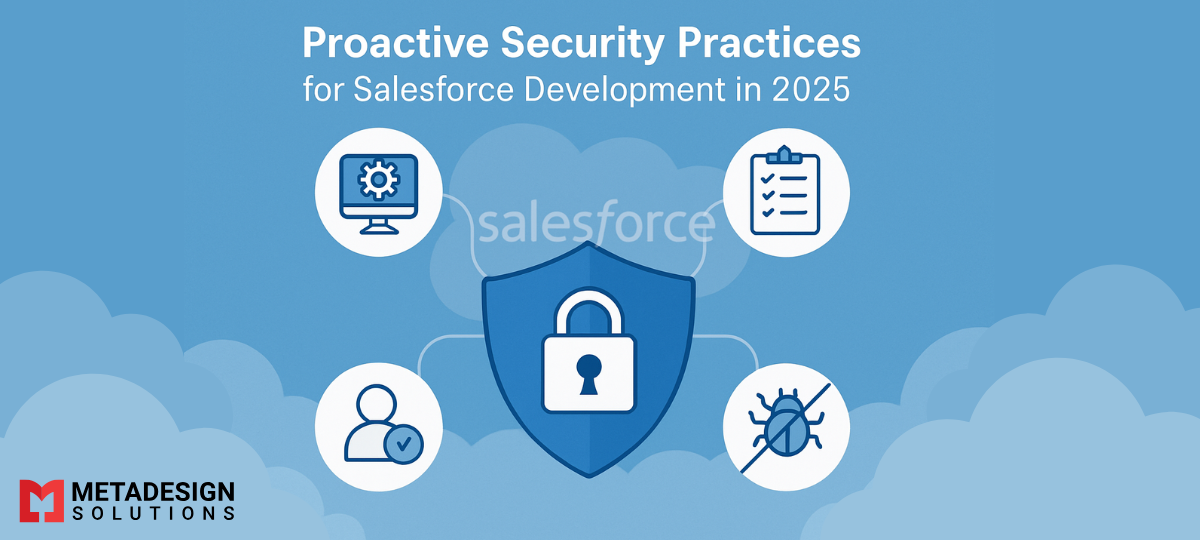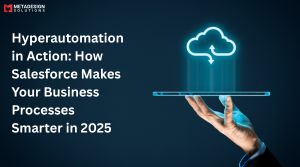Introduction
As Salesforce continues to expand its role as a mission-critical platform for businesses across industries, securing data and applications built on Salesforce is more important than ever. In 2025, Salesforce developers must adopt proactive security practices that align with modern threats, platform advancements, and compliance mandates.
This blog will break down the most critical security strategies for Salesforce development today—from secure Apex coding and Lightning Web Component (LWC) governance to OAuth-based integrations, DevOps security hardening, and zero-trust architecture for enterprise-scale deployments.
1. Secure Apex Development: From Code to Context
Writing secure Apex code is a foundational aspect of Salesforce application development. As of 2025, Salesforce continues to enforce a robust set of best practices:
Key Practices:
- Avoid SOQL injection: Use parameterized queries
- Enforce field-level security (FLS)
- Validate user input against known constraints
- Use with sharing keyword to enforce org visibility
Example: Preventing SOQL Injection
public class AccountSearcher {
public static List<Account> findAccounts(String userInput) {
String safeInput = String.escapeSingleQuotes(userInput);
return [SELECT Id, Name FROM Account WHERE Name LIKE :('%' + safeInput + '%')];
}
}
Ready to Fortify Your Salesforce Environment?
Partner with MetaDesign Solutions to implement future-proof security practices in your Salesforce development.
These patterns ensure not only correctness but also protection from common vulnerabilities.
2. LWC Security Controls and Locker Service in 2025
Lightning Web Components (LWC) have evolved significantly with enhanced Locker Service isolation, ensuring that components are sandboxed from malicious DOM access or data leaks.
LWC Security Features:
- Shadow DOM enforcement
- Cross-namespace access protection
- DOM sanitization in runtime
// Avoid using raw innerHTML
this.template.querySelector(‘.container’).textContent = userInput;
Use Lightning Data Service (LDS) to fetch data securely instead of exposing direct Apex calls for CRUD operations.
3. OAuth 2.0 & Named Credentials: Safe API Access
Most modern Salesforce applications interact with external APIs. In 2025, OAuth 2.0 with Named Credentials is the standard.
Best Practices:
- Use JWT Bearer Flow for server-to-server auth
- Store secrets in Named Credentials, not in Apex
- Leverage Token Exchange for multi-service SSO
HttpRequest req = new HttpRequest();
req.setEndpoint(‘callout:MyExternalService’);
req.setMethod(‘GET’);
HttpResponse res = new Http().send(req);
4. Salesforce Shield: Encryption, Auditing, Monitoring
Salesforce Shield offers enterprise-grade security with:
- Field-level encryption (Platform Encryption)
- Event Monitoring for detecting anomalies
- Field Audit Trail for long-term change tracking
Shield encryption now supports encrypting data-at-rest and certain standard fields like Case Description or Contact Email.
5. DevOps & Security Scanning in CI/CD Pipelines
Modern Salesforce DevOps pipelines in 2025 integrate static code analysis and compliance checks as part of CI/CD.
DevSecOps Workflow:
- Developer pushes Apex code to Git
- GitHub Actions runs PMD or CodeScan for security issues
- Secrets scanning blocks exposed tokens or hardcoded passwords
- Jenkins/GitLab deploys only if tests pass
This approach ensures vulnerabilities never reach production.
Learn more about DevOps in our blog on Salesforce CI/CD using DevOps Center.
6. Zero Trust and Identity Federation
Large enterprises are implementing Zero Trust security models using Salesforce Identity, Azure AD, and Okta.
Features in 2025:
- Context-aware MFA policies (e.g., location + IP range)
- Login IP restriction per profile
- Session timeout policies and login history APIs
- SAML-based SSO for federated access
Use Custom Login Flows to dynamically enforce conditions before session creation.
7. Data Classification and DLP Policies
Salesforce now includes Data Classification Metadata, which helps identify:
- PII (Personally Identifiable Information)
- Sensitive financial data
- Health records (HIPAA)
You can set up automated DLP rules using Shield + Flow to:
- Prevent exports of sensitive reports
- Alert admins on unusual download activity
- Revoke access to external integrations dynamically
8. Secure AppExchange Package Development
If you’re building managed packages, secure them with:
- Security Review pre-checks
- Permission Set encapsulation
- API Access settings and granular metadata visibility
Follow the OWASP Top 10 for Apex & LWC, and always scope permissions based on least privilege.
9. Real-Time Threat Detection with Einstein Trust Layer
In 2025, Salesforce Einstein Trust Layer detects and acts on anomalies in real time:
- Unusual data access (e.g., large exports)
- Strange login patterns (Geo-IP mismatches)
- Malicious LWC behavior (script injection attempts)
Admins can trigger Flow-based actions like blocking sessions, notifying security teams, or revoking tokens.
Conclusion
With the increasing adoption of AI, integrations, and hyperautomation, Salesforce security practices in 2025 must be proactive, layered, and contextual. From Apex coding to OAuth integrations and DevSecOps pipelines, developers play a central role in securing the platform.
At MetaDesign Solutions, we specialize in secure, enterprise-grade Salesforce development. Whether you’re building a regulated CRM or integrating sensitive SAP/ERP systems, our team ensures you scale without compromise.
Hashtag Related:
#SalesforceSecurity #SecureApex #LWC #OAuth2 #DevSecOps #SalesforceShield #ZeroTrust #SSO #SalesforceDevOps #Cybersecurity #CRMCompliance #Salesforce2025 #MetaDesignSolutions



